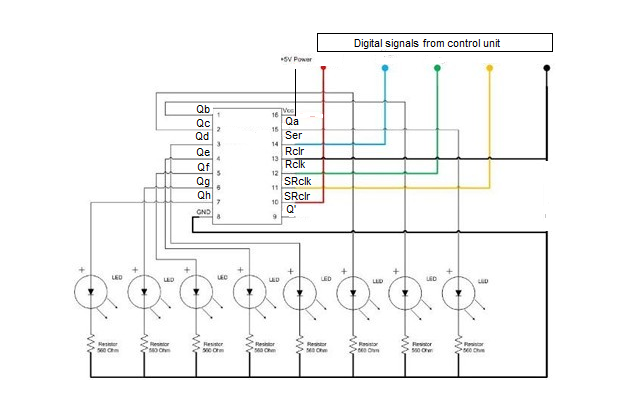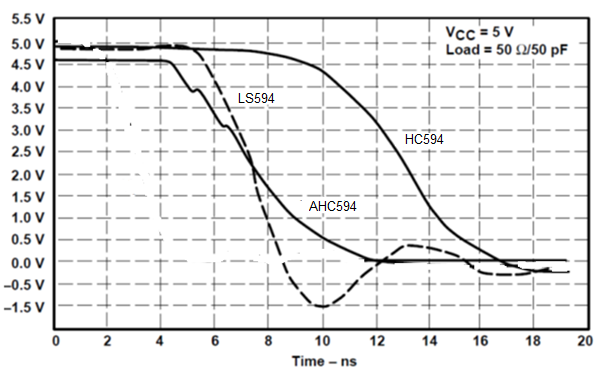SCLS040G December 1982 – March 2015 SN74HC594
UNLESS OTHERWISE NOTED, this document contains PRODUCTION DATA.
- 1 Features
- 2 Applications
- 3 Description
- 4 Revision History
- 5 Pin Configuration and Functions
-
6 Specifications
- 6.1 Absolute Maximum Ratings
- 6.2 ESD Ratings
- 6.3 Recommended Operating Conditions
- 6.4 Thermal Information
- 6.5 Electrical Characteristics
- 6.6 Switching Characteristics: CL = 50 pF
- 6.7 Switching Characteristics: CL = 150 pF
- 6.8 Timing Requirements
- 6.9 Operating Characteristics
- 6.10 Typical Characteristics
- 7 Parameter Measurement Information
- 8 Detailed Description
- 9 Application and Implementation
- 10Power Supply Recommendations
- 11Layout
- 12Device and Documentation Support
- 13Mechanical, Packaging, and Orderable Information
封装选项
请参考 PDF 数据表获取器件具体的封装图。
机械数据 (封装 | 引脚)
- DW|16
- N|16
- D|16
散热焊盘机械数据 (封装 | 引脚)
- DW|16
订购信息
9 Application and Implementation
NOTE
Information in the following applications sections is not part of the TI component specification, and TI does not warrant its accuracy or completeness. TI’s customers are responsible for determining suitability of components for their purposes. Customers should validate and test their design implementation to confirm system functionality.
9.1 Application Information
The SN74HC594 is a low drive CMOS device that can be used for a multitude of bus interface type applications where output ringing is a concern. The low drive and slow edge rates will minimize overshoot and undershoot on the outputs.
9.2 Typical Application
 Figure 6. Typical Application Schematic
Figure 6. Typical Application Schematic
9.2.1 Design Requirements
This device uses CMOS technology and has balanced output drive. Take care to avoid bus contention because it can drive currents that would exceed maximum limits. The high drive will also create fast edges into light loads so consider routing and load conditions to prevent ringing.
9.2.2 Detailed Design Procedure
- Recommended input conditions:
- Rise time and fall time specs see (Δt/ΔV) in Recommended Operating Conditions table.
- Specified High and low levels. See (VIH and VIL) in Recommended Operating Conditions table.
- Inputs are overvoltage tolerant allowing them to go as high as 5.5 V at any valid VCC
- Recommended output conditions:
- Load currents should not exceed 35 mA per output and 70 mA total for the part
- Outputs should not be pulled above VCC
9.2.3 Application Curves
 Figure 7. Switching Characteristics Comparison
Figure 7. Switching Characteristics Comparison